
Giovanni Antonio (Giannantonio) Orsini del Balzo was a southern Italian nobleman and military leader; he was Prince of Taranto, Duke of Bari, Count of Lecce, Acerra, Soleto and Conversano, as well as Count of Matera (1433–63) and of Ugento (1453–63).

Altamura is a town and comune of Apulia, in southern Italy. It is located on one of the hills of the Murge plateau in the Metropolitan City of Bari, 45 kilometres southwest of Bari, close to the border with Basilicata. As of 2017, its population amounts to 70,595 inhabitants.

Borgo is the 14th rione of Rome, Italy. It is identified by the initials R. XIV and is included within Municipio I.
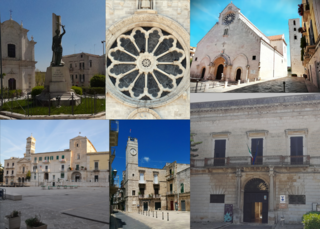
Ruvo di Puglia is a city and comune (municipality) of 25,457 inhabitants in the Metropolitan City of Bari in Apulia.

Altamura Cathedral, dedicated to the Assumption of the Blessed Virgin Mary, is a Roman Catholic cathedral in the city of Altamura, in the Metropolitan City of Bari, Apulia, in southern Italy.

Castel Nuovo, often called Maschio Angioino, is a medieval castle located in front of Piazza Municipio and the city hall in central Naples, Campania, Italy. Its scenic location and imposing size makes the castle, first erected in 1279, one of the main architectural landmarks of the city. It was a royal seat for kings of Naples, Aragon and Spain until 1815.

Castello di Reschio forms part of a chain of walled settlements in proximity of the Tuscan boundaries. It belonged to the county of Porta Sant’Angelo of the commune of Perugia, perched on a hillock above the valley of Pierle, along the right riverbank of the Niccone stream. Today it is part of the communal territory of Lisciano Niccone, province of Perugia.
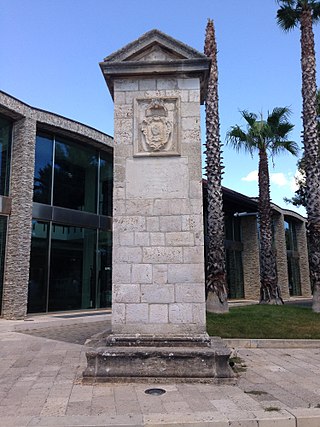
The Epitaph of Altamura is a monument located in Altamura, Southern Italy. According to historian Ottavio Serena, it was erected right after the visit in city, on 8 April 1807, of Joseph Bonaparte, who had just become king of Naples. According to more recent hypotheses, this monument was instead built in the year 1797, right after the visit of the kings Ferdinand IV and Maria Carolina of Austria in the city of Altamura. The commemorative monument is located in largo Epitaffio. Although traditionally named epitaph, it is not a funerary inscription but instead a commemorative monument.

Pulo di Altamura is a doline located on the Murge plateau. It is the largest doline in that region and it is located about 6 kilometers (3.7 mi) north-west of the city of Altamura. It shares the local toponym pulo with other large dolines of the region, i.e. Pulicchio di Gravina, Pulo di Molfetta and Pulicchio di Toritto.
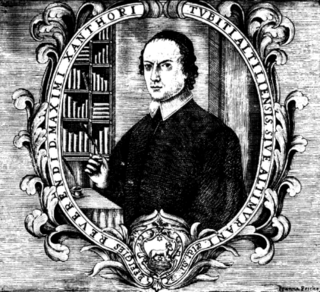
Massimo Santoro Tubito or Latin: Maximus Xanthorus Tubitus was an Italian priest and writer. He's best known for his books Divinum Theatrum (1702) and De Antichristo (1712), both of them written in Latin. The subjects covered are history and religion.
Domenico Santoro was a local historian and physician closely related to the city of Altamura, Kingdom of Naples. He's known mostly for his essay on the history of the that town: "Description of the city of Altamura".

Piazza del Duomo is the main square of the city of Altamura, Italy. It is located in the center of the historic city center, as well as in the middle of the main street of the city, that is corso Federico II di Svevia. Moreover, Altamura Cathedral, the main church of the city, is located on the square. It is also known because the Tree of Liberty was planted in this square during the so-called Altamuran Revolution (1799).

The Megalithic Walls of Altamura are defensive walls dating back to the 4th century BCE. They were the city walls of the ancient city of Altamura, Italy. Nowadays, only a few parts of the original wall remain; the original track of the wall spanned over a length of about 3.6 km. They were about 4 meters high, while the base of the walls was about 5 meters wide.
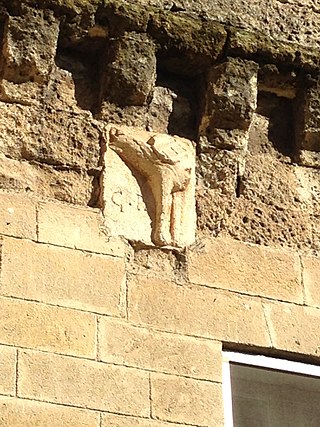
Giovanni Pipino di Altamura was an Italian nobleman and condottiero. He belonged to the Pipino noble family, which began with Giovanni Pipino da Barletta and that, after just a few decades, declined.
Giovanni Pipino da Barletta was an Italian nobleman and dignitary of the Kingdom of Naples. He started the Pipino noble family, which, after just a few decades, disappeared with the death of his grandson Giovanni Pipino di Altamura and his brothers.
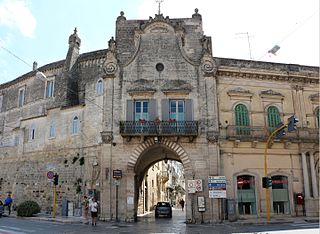
Porta Bari, previously called Porta de Bari, was one of the main gates of the city of Altamura, before the city walls of the city were torn down over the 19th century. Similarly to most European cities, the city walls were torn down, because the new technology and military techniques employed starting from the 19th century made them useless for defense purposes.
Francesco Cassiano de Silva was a Spanish engraver. His engravings mainly depicted some cities of the Kingdom of Naples and they represent an invaluable source of information on the history of Southern Italy.

Porta Matera was one of the main gates of the old city of Altamura. They were part of the City Walls of Altamura, which were completely demolished during the nineteenth century since they had become useless for defence purposes. The gate itself was demolished in 1872. The monastery Monastero del Soccorso is located on the left side of the gate, while on the right some ruins of the city walls can be seen, presumably saved from destruction because of the bas-relief depicting "Pipino's leg".

The City Walls of Altamura were a military structure meant for defensive purposes and located in the city of Altamura, Italy. Its origin dates back to the Middle Ages and it was in use until the 19th century when it started to be gradually torn down. Nowadays only a few isolated parts of the walls survive. It shouldn't be confused with the Megalithic Walls of Altamura, which date back to the 5th–4th century BC and intersect in some parts with the city walls.
















